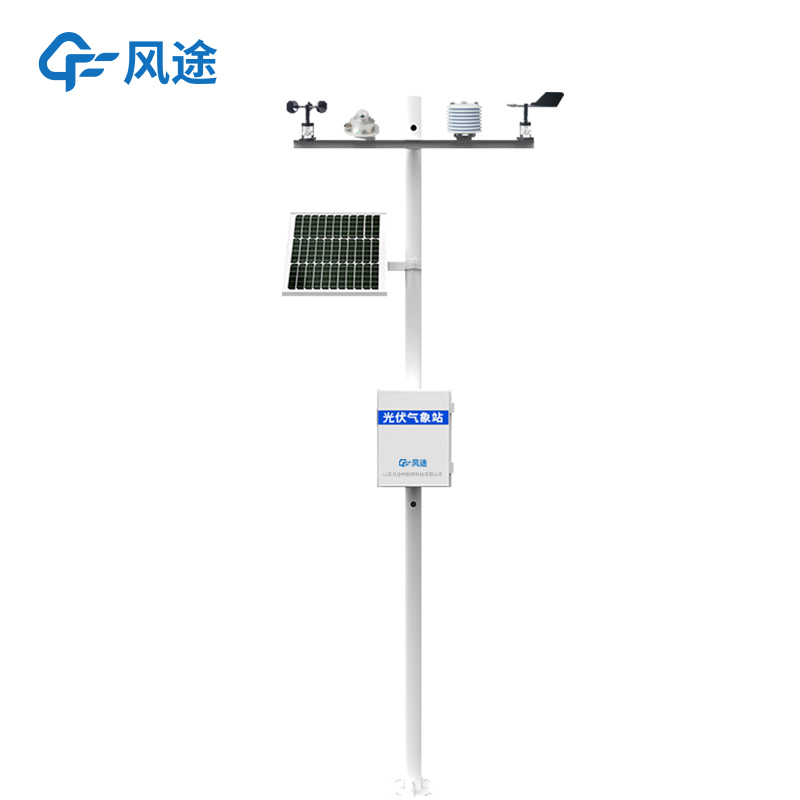Shandong Fengtu IOT Technology Co., Ltd
Sales Manager:Ms. Emily Wang
Cel,Whatsapp,Wechat:+86 15898932201
Email:info@fengtutec.com
Add:No. 155 Optoelectronic Industry Accelerator, Gaoxin District, Weifang, Shandong, China

Sales Manager:Ms. Emily Wang
Cel,Whatsapp,Wechat:+86 15898932201
Email:info@fengtutec.com
Add:No. 155 Optoelectronic Industry Accelerator, Gaoxin District, Weifang, Shandong, China
time:2025-08-08 09:24:54 source:Weather Station viewed:259 time
On the rooftops of distributed photovoltaic power stations and between small photovoltaic arrays, a compact and sophisticated monitoring device is often seen – this is the PV Weather Station. With its small size, flexible deployment, and precise monitoring capabilities, it provides reliable data for the efficient power generation and safe operation and maintenance of small and medium-sized photovoltaic power stations. So, what components make up such an important device?
The PV Weather Station mainly consists of the following parts: sensors, data collectors, power supply systems, and data transmission and display modules.
Sensors are responsible for collecting various meteorological data. The solar radiation sensor takes the lead, as it can accurately measure the total solar radiation intensity, providing a basis for evaluating the power generation of photovoltaic power stations. The integrated temperature and humidity sensor can simultaneously monitor the module temperature and ambient humidity. Module temperature is directly related to power generation efficiency – an increase in temperature will lead to a decrease in efficiency; ambient humidity helps judge the risk of moisture damage to modules, and when humidity is high, attention should be paid to the problem of frame corrosion. The miniature wind speed and direction sensor can detect wind speed and direction, providing a reference for evaluating the impact of strong winds on supports; the rain sensor uses a tipping bucket design to record rainfall, helping assess the cleanliness of photovoltaic panels and preventing dust accumulation from affecting power generation.
The data collector is responsible for aggregating and preliminarily processing the data collected by the sensors. It collects data from each sensor at preset time intervals, organizes the data, calculates important parameters, and stores historical records for easy subsequent query and analysis.
The power supply system ensures the continuous operation of the weather station. The top of the device is usually integrated with a high-efficiency miniature solar panel. Combined with battery energy storage, it ensures stable power supply and uninterrupted monitoring work.
The data transmission and display module is responsible for data presentation and transmission. It is equipped with a miniature LCD display that can real-time show core data such as radiation intensity, module temperature, and wind speed, facilitating on-site viewing. Data transmission supports multiple wireless communication methods to meet the networking needs of small and medium-sized power stations; it also supports IoT transmission, enabling rapid upload of data to cloud platforms. The device has a built-in data storage function, so key information will not be lost even when the network is interrupted, and it will automatically synchronize to the backend system once the signal is restored.

An Atmospheric Visibility Sensor is a professional meteorological instrument used to quantify atmospheric transparency. It provides precise visibility data by measuring the degree of light attenuation within a specific range. In fields such as traffic management, meteorological observation, and envi...
Meteorological changes have a crucial impact on numerous fields. In agricultural production, meteorological conditions are directly related to the growth and harvest of crops. Through meteorological monitoring, people can obtain weather information in advance, arrange agricultural activities reasona...
In conventional understanding, atmospheric visibility is influenced by subjective factors, but it is essentially an objective phenomenon. In meteorology, this phenomenon is defined by optical path length: specifically, it refers to the distance a parallel light beam (emitted by an incandescent lamp...
Advection fog is a small-scale dense fog formed under conditions of high local air humidity, low temperature, and light wind. It is characterized by strong suddenness, regionality, and uneven concentration distribution. As visibility can plummet to tens of meters or even lower within a short period,...